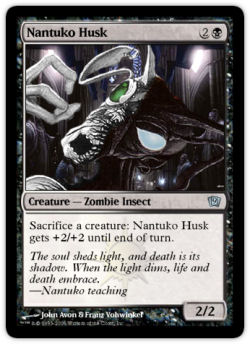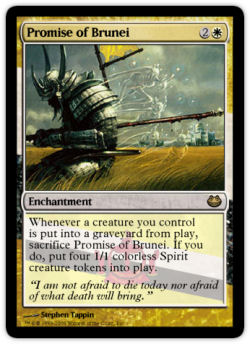“Aren’t you qualified for this Pro Tour?”
— Every one of my opponents
I haven’t actually played in a Pro Tour Qualifier in quite some time, so I thought I would write about it since I know many of you are caught up in this Team Standard season. I’ll not be dwelling on individual matches… instead, I’ll be touching on tips and tricks on how to play the decks involved.
Some friends of mine who have never qualified before decided it was time to abuse the new qualifying system. All teams with an average team rating of 1700 among all three players will qualify for the Pro Tour. This means that the team doesn’t even need to necessarily play with one another anymore. All they need to do is build up their individual ratings and make sure their average together is high enough. I personally think this system makes a lot more sense, because it is more flexible for players who can’t make it to every PTQ but would still like to play with certain people.
Armed with this knowledge, my three friends who had never qualified before decided that they would maximize their chances of getting a high enough rating by having two of them play with me and the third play with Jon Sonne and Gerard Fabiano. I was more than happy to help out, since they’re friends and I could still win a free ticket to Charleston.
I played a decent amount of Standard right after Honolulu, mostly with Heartbeat, which I felt (at the time) was the best deck in the format. The only reason I was bothering to test was to help out my friends who were attending GP Madison. However, I didn’t settle on the correct decks to play until the Friday before the GP, so my friends ended up playing a god-awful BWG control deck with the one and only Helldozer in the sideboard.
After the GP it was obvious that the three decks people liked most were Ghost Dad, Heartbeat and either Magnivore or Zoo/RG. I personally can’t imagine ever wanting to play Zoo or RG, because the more I test with those decks the more I see them constantly lose to themselves. Magnivore and Heartbeat were two decks I really liked, and felt like you had to play them. The third deck, however, I was not set on yet. Ghost Dad seemed cool right after the Pro Tour, but the more I actually played it the more I realized how weak it actually is. I thought that it was the best BW deck to come out of Honolulu, but I was wrong. Very wrong.
A few weeks ago, Olivier Ruel wrote an article about his experience at the Pro Tour. In it he also gave his thoughts on what he thought was the best deck to come out of the PT, and it was a deck I had forgotten about: BW Husk. I saw the deck in action in Hawaii, and I do remember at the time thinking it looked pretty cool. It was also very close to making the T8, and if it had I think it would’ve had a very good chance of winning it all. For reference, here is the list that was played at the PT.
Creatures (26)
- 4 Isamaru, Hound of Konda
- 2 Savannah Lions
- 4 Kami of Ancient Law
- 3 Nantuko Husk
- 4 Dark Confidant
- 2 Ghost Council of Orzhova
- 3 Orzhov Pontiff
- 4 Plagued Rusalka
Lands (22)
Spells (12)

The deck, even though it wasn’t optimal, clearly had some powerful interactions. Olivier made some changes to the deck and then I made some further changes. This is the list I played at the PTQ:
Creatures (25)
- 4 Isamaru, Hound of Konda
- 3 Kami of Ancient Law
- 4 Nantuko Husk
- 4 Dark Confidant
- 3 Ghost Council of Orzhova
- 3 Orzhov Pontiff
- 4 Plagued Rusalka
Lands (22)
Spells (13)
Sideboard


Let me explain the changes that were made. First off, the manabase was altered by adding four Orzhov Basilica. Basilica was the land that I always wanted to draw, and I can’t imagine not running it in any BW aggressive deck. Four mana is so important to you, and this land allows you to run a low land count but still hit your mana. Some of the numbers were changed around for fairly obvious reasons, and the only other significant alteration were the Pithing Needles main. In Team Standard, Pithing Needle is a fantastic card. Pithing Needle is very good at stopping Umezawa’s Jitte, which is the main way a lot of BW decks try and beat you, as well as halting any Transmute shenanigans from a Heartbeat player. So you have more than a 60% chance of Pithing Needle being clutch.
His sideboard just wasn’t working for me, so I needed to change it. Mindslicer was proving to be superior to Hokori in every situation, and that change was easy for me to make. Grave Pact was also not proving too hot. Last Gasp seemed better to me, because it doubled as a sideboard card versus aggressive decks as well as a way to kill Dark Confidant, which is all that matters in the BW mirror. Since I had the Pithing Needles main it freed up three more slots for me, which I devoted to Eight-and-a-Half-Tails. I hadn’t seen Eight-and-a-Half-Tails in many BW decks, and I wasn’t sure why. It seemed very good to me, especially versus Hand in Hand, where their only game plan against you is a Paladin En-Vec.
I ended up going 8-0-1 with the deck, which was also our teams record. I honestly believe BW Husk is the best deck in the format. I didn’t come close to losing a match the entire day, and I played against everything, from Heartbeat, Magnivore, URW control, Zoo, and four different BW decks.
The Heartbeat matchup is very easy, probably your second best matchup. Pithing Needle and Kami of the Ancient Law make going off very difficult for them, and you put enough pressure on them to make sure they don’t get around it. The real problem for them is that they have no good answer to Dark Confidant, so you’re able to just draw into so much gas versus them that they can’t really recover from it. Plague Rusalka is the worst card against them, so feel free to board them out for the Mindslicers and extra Castigate.

Magnivore and URW control are similar, in that they both are easy matchups – particularly because they pretty much have no sideboard versus you. Promise of Bunrei really shines in these matchups, because they both play mass removal effects. Your Pithing Needle is pretty much irrelevant in this matchup, so board those out as well for the anti control package. Against Vore, the Shining Shoal is great against stopping a Volcanic Hammer from killing your Dark Confidant or saving a Husk from Wildfire if a Promise is on the table. This way you can have the Husk and the tokens from the Promise.
Zoo and RG decks are both easy matchups, because your creatures are better in combat than theirs for the most part, and you can clog the board up real fast. Because you can clog the board up so fast, this forces them to move into the “burn them out” plan faster than they would like. Barring an absurd draw on their part, it’s very unlikely they’ll be able to burn you out before a Ghost Council or a Husk finishes them off. This is exactly how both my RG and Zoo matchups played out. After board it gets only better, since Shining Shoal makes it even harder for them to burn you out and they don’t have a good sideboard plan versus you.
The BW decks I played against were Ghost Dad and Hand in Hand, which I assume are the most popular archetypes. Both matchups are very good in my opinion, because you simply have more powerful interactions than they do. After playing it all day I think that in the BW mirror, the most important cards are Dark Confidant, Orzhov Pontiff, and Eight-and-a-Half-Tails. Since you’re the only one that plays all three you can see how you have a significant advantage over the other two versions of BW. Hand in Hand’s only game plan against you is the protection Knights, and this plan is just awful against you for two reasons. One, you have creatures that trump their Knights in the form of Eight-and-a-Half-Tails and Nantuko Husk. Second, Orzhov Pontiff can easily kill all of their creatures. The Pontiff was a one sided Wrath of God for me every time I played him. That card is simply too good, and I can’t imagine why a BW deck wouldn’t play it. This deck not only plays it… it abuses the Pontiff better than any other deck possibly could.
If you’re planning on attending a Team Standard PTQ, you should strongly consider this deck. I firmly believe it is the best deck in the format. It does have many interactions that can make it difficult to play at times, so you should really practice with the deck as much as you can before committing to it.
The decks my teammates played were Magnivore and GW Greater Good. The Greater Good deck was definitely a mistake, as it had the worst record on our team, and should’ve just been a Heartbeat deck. We weren’t sure that our third would be able to play the Heartbeat deck well enough though, so we audibled to GW. It seems to me that the three best decks in the format are BW Husk, Magnivore, and Heartbeat, in that order. Magnivore and Heartbeat are close, but I think if BW Husk rises in popularity you’ll see Heartbeat will have a harder matchup versus that deck than Vore does against Zoo. The Heartbeat on Magnivore matchup can be close, but if they have Goblin Flectomancer in their sideboard I think Vore has an edge.
Here’s the list of Vore we played:
Creatures (5)
Lands (24)
Spells (31)
- 3 Pyroclasm
- 4 Stone Rain
- 2 Tidings
- 4 Sleight of Hand
- 3 Wildfire
- 4 Eye of Nowhere
- 3 Demolish
- 4 Compulsive Research
- 4 Remand
Sideboard

The Miren is definitely something I think you want to be running in the deck. Other than that, there is no significant “tech” in this list. I would just tune it to whatever specifications you like, but this list did do well for us.
Like I said, our Greater Good deck wasn’t good so I won’t bother you with a list.
Good luck at your PTQ!
Osyp “Joe Black” Lebedowicz
